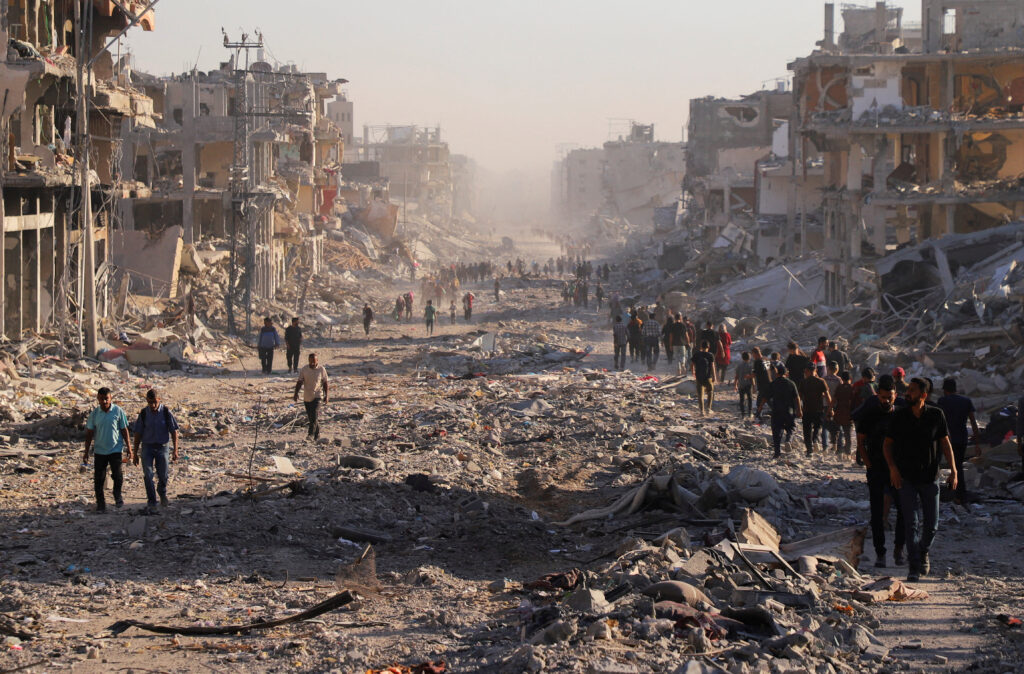Israel announced a ceasefire and began withdrawing troops from Gaza on Friday, signaling a potential end to two years of devastating conflict. The truce, brokered by US President Donald Trump, has sparked cautious hope among thousands of displaced Palestinians returning to what remains of their homes.
The Israeli military confirmed that its forces stopped firing at noon “in preparation for the ceasefire agreement and the return of hostages.” The Pentagon later verified that Israel had completed the first phase of its pullback, though it still maintains control over about 53 percent of Gaza.
Under the deal, Hamas is expected to release 47 hostages both living and decease while Israel plans to free 250 Palestinian prisoners and 1,700 Gazans detained since the conflict began on October 7, 2023. The ceasefire sets a 72-hour deadline for Hamas to complete the releases.
In Gaza, weary residents were seen trekking from Khan Yunis toward northern neighborhoods reduced to rubble. “We’re going back to our areas, full of wounds and sorrow, but we thank God for this situation,” said Ameer Abu Iyadeh, a 32-year-old resident.
Prime Minister Benjamin Netanyahu described the ceasefire as a “moment of national joy,” expressing optimism that the return of hostages would mark the end of the war.
Meanwhile, international actors welcomed the truce. Italy confirmed that the EU mission at Rafah will reopen the pedestrian crossing on October 14, facilitating humanitarian movement.
Despite the relief, uncertainty lingers. Key issues, such as Hamas’s disarmament and the establishment of a transitional Gaza authority proposed in Trump’s peace plan, remain unresolved. Senior Hamas official Osama Hamdan stated that the group rejects such an authority.
Still, for many Gazans, the fragile peace offers a glimpse of hope amid profound grief. “I’m happy about the truce and peace,” said Areej Abu Saadaeh, 53. “Even though I lost my children, I find joy in finally going home.”

